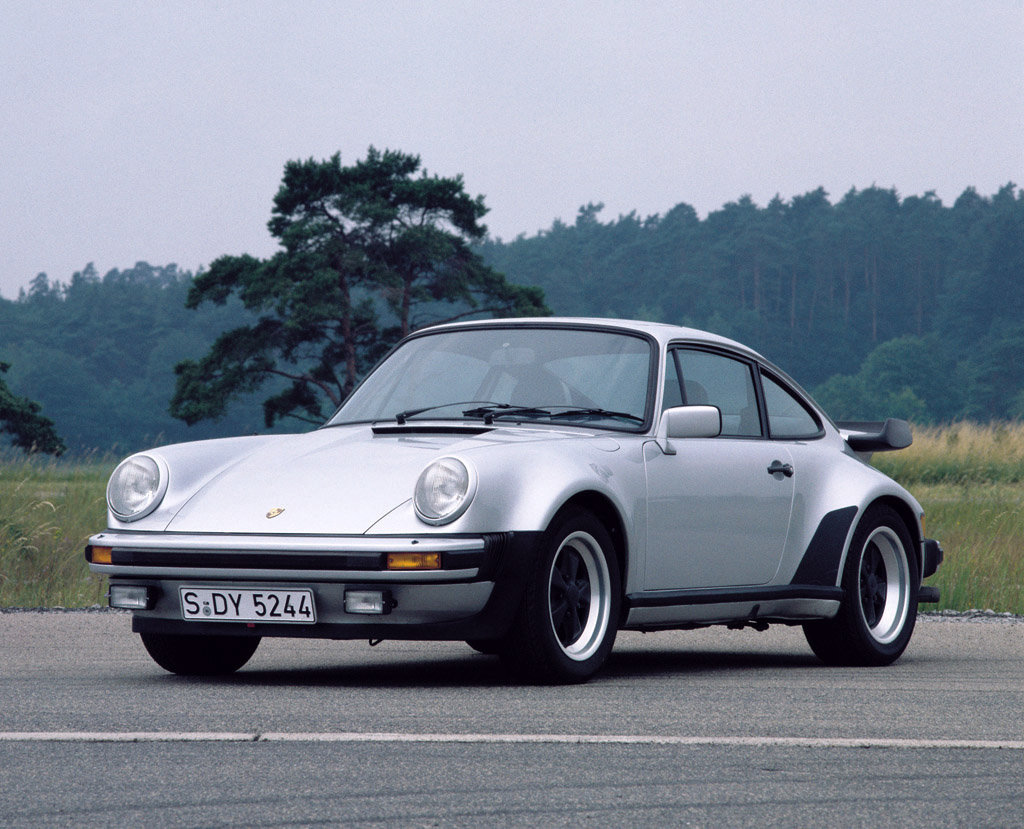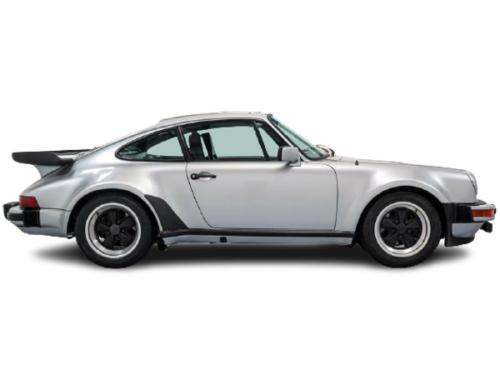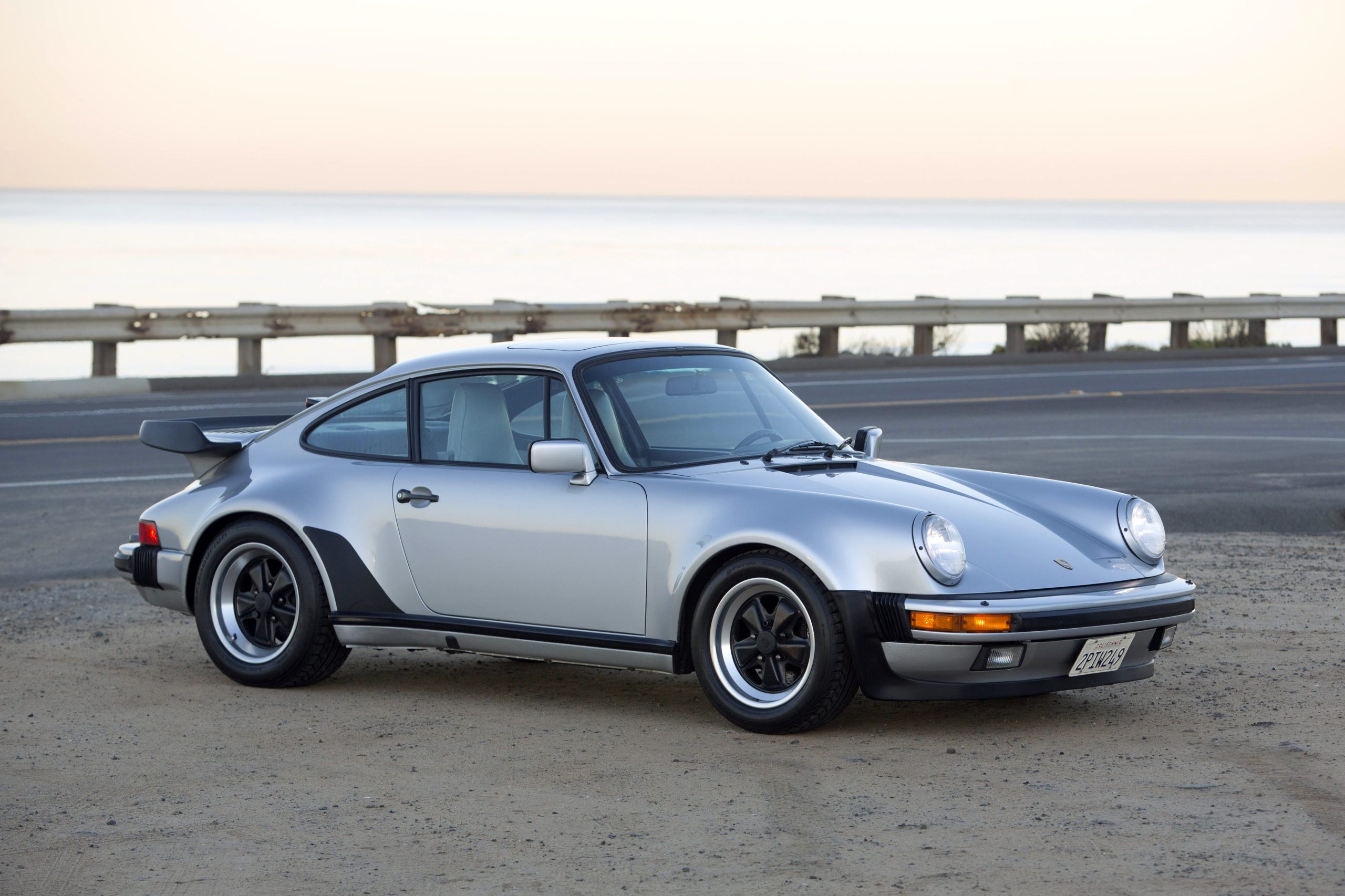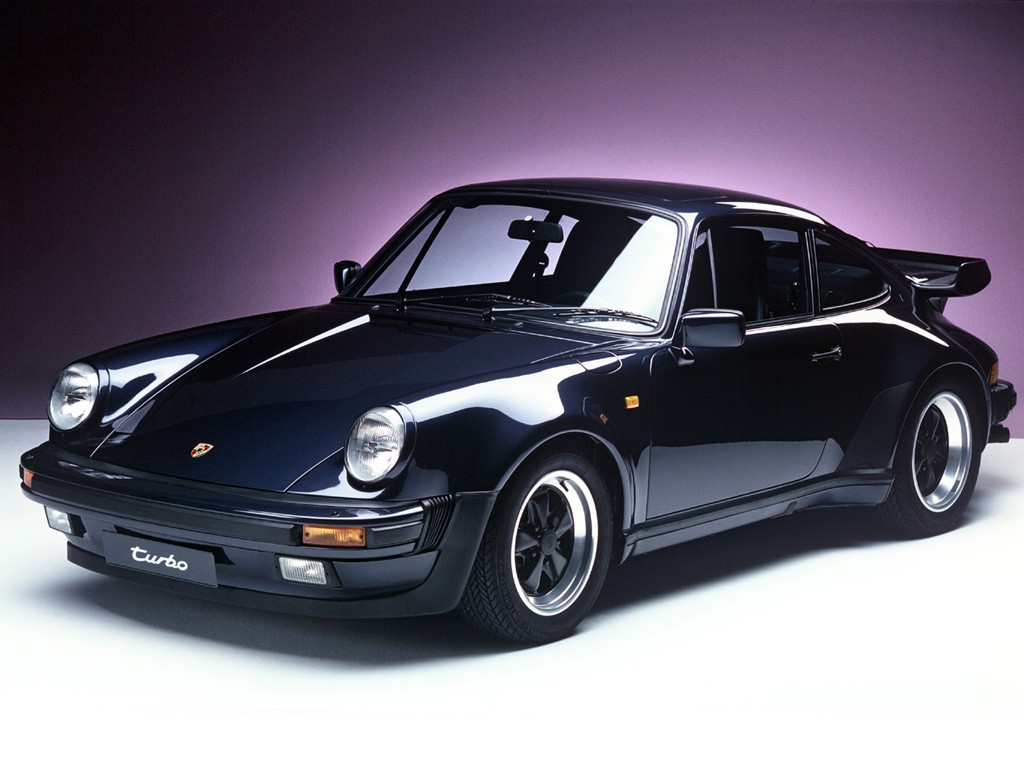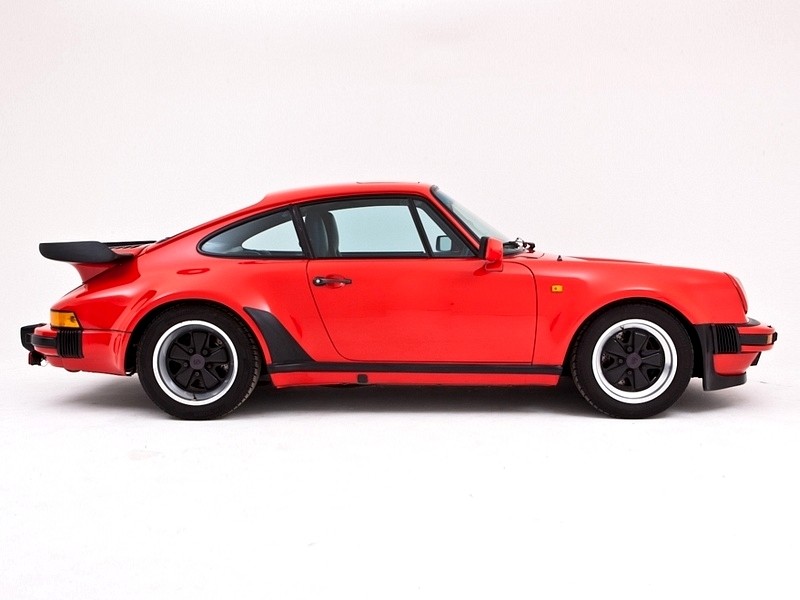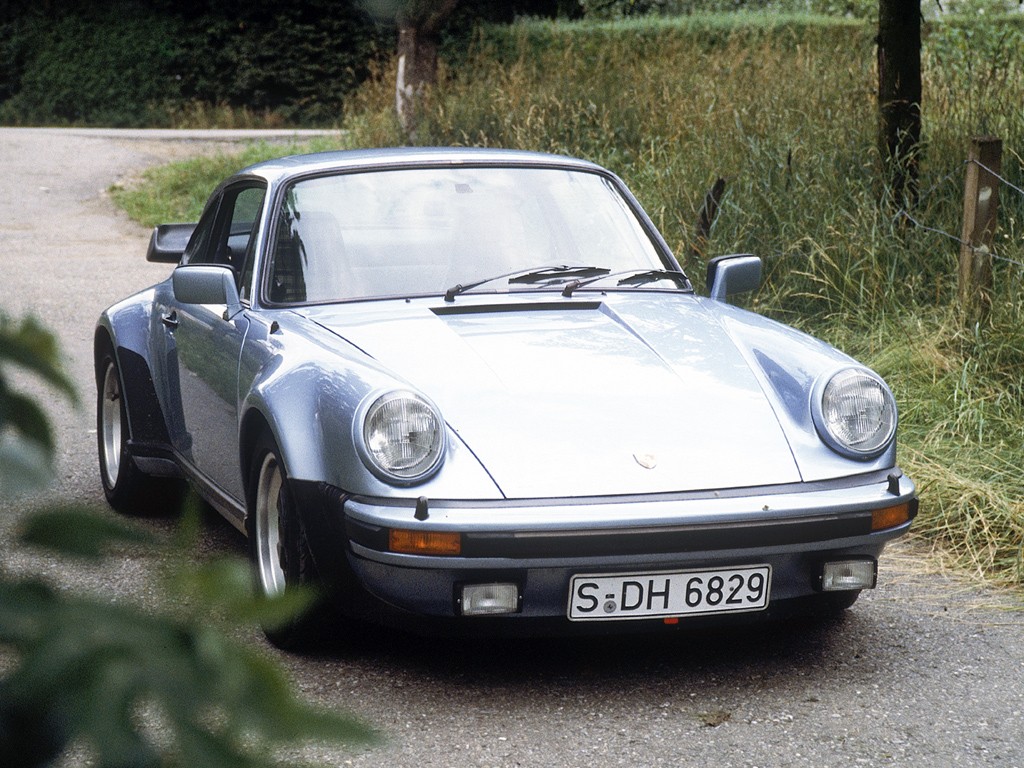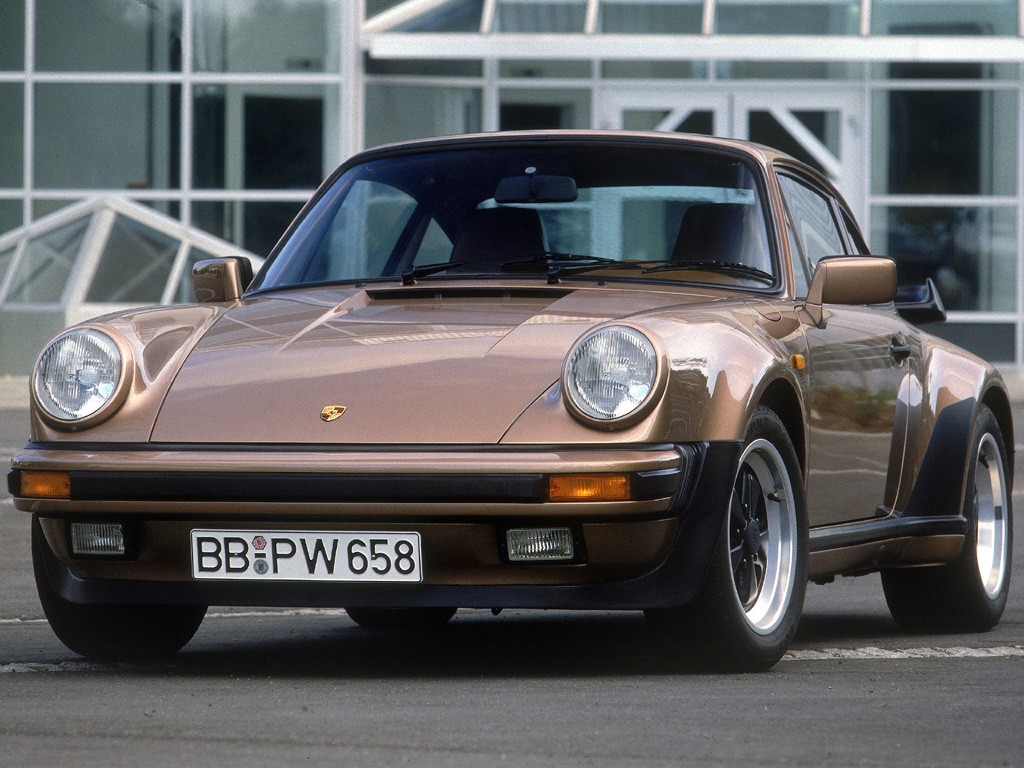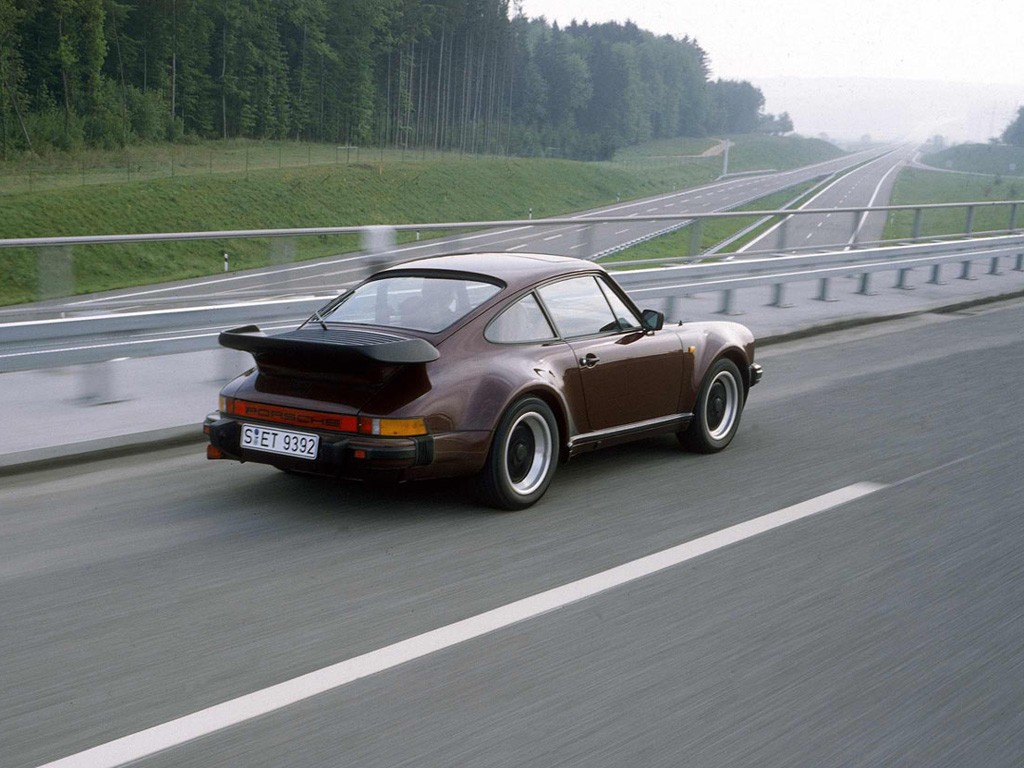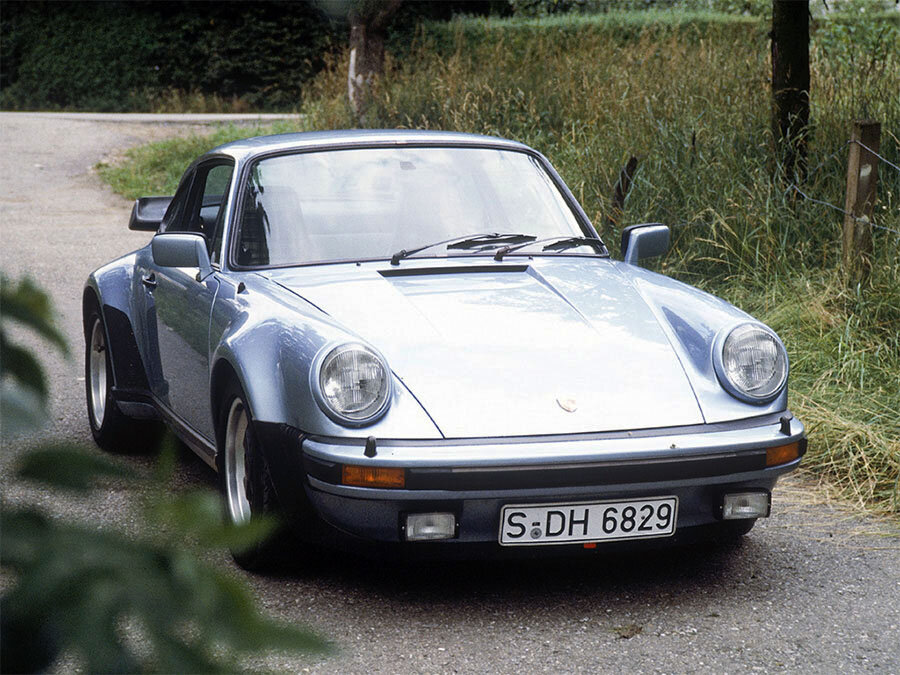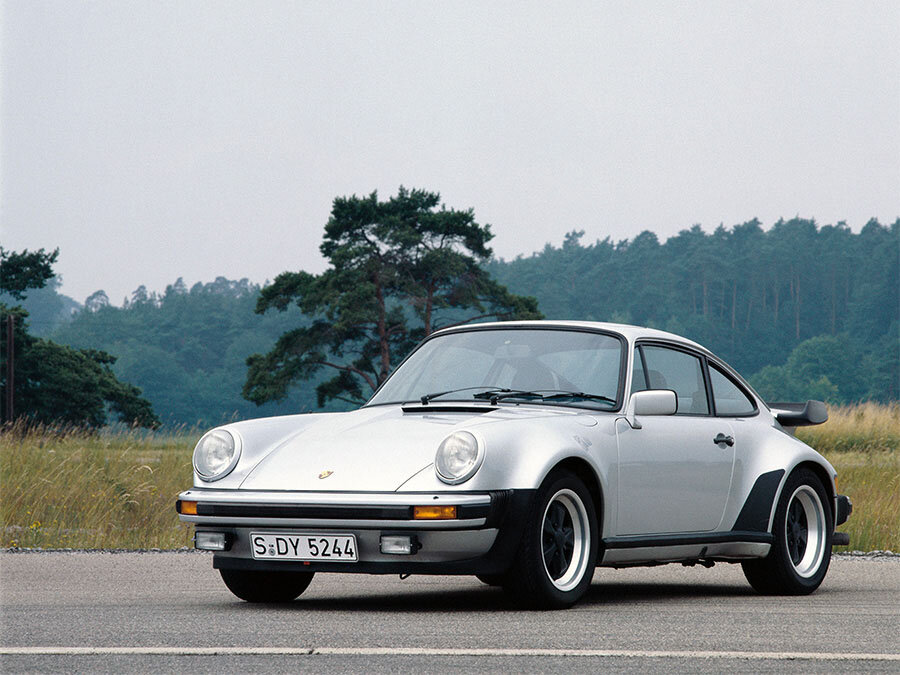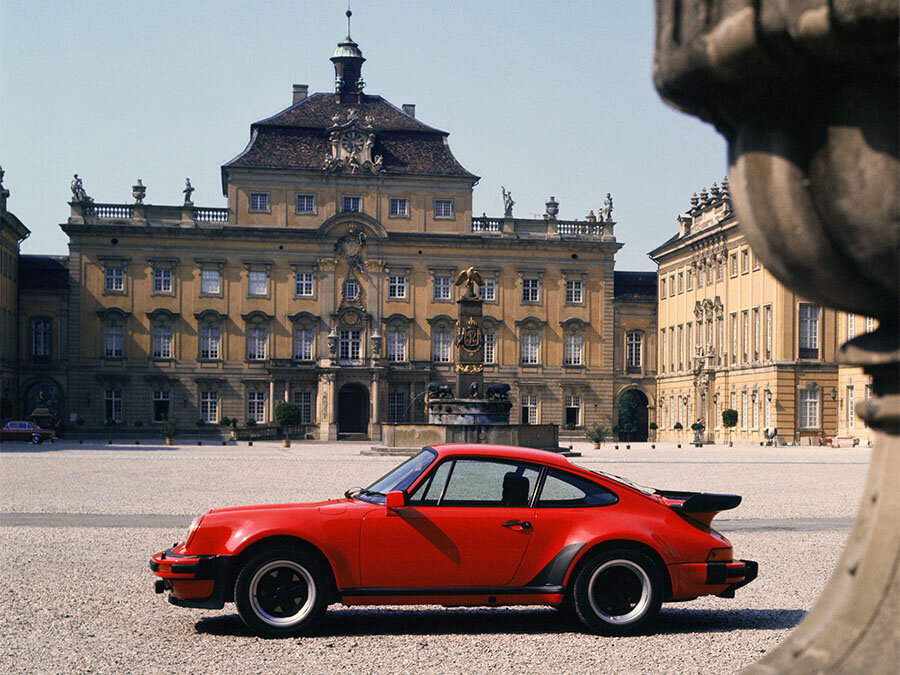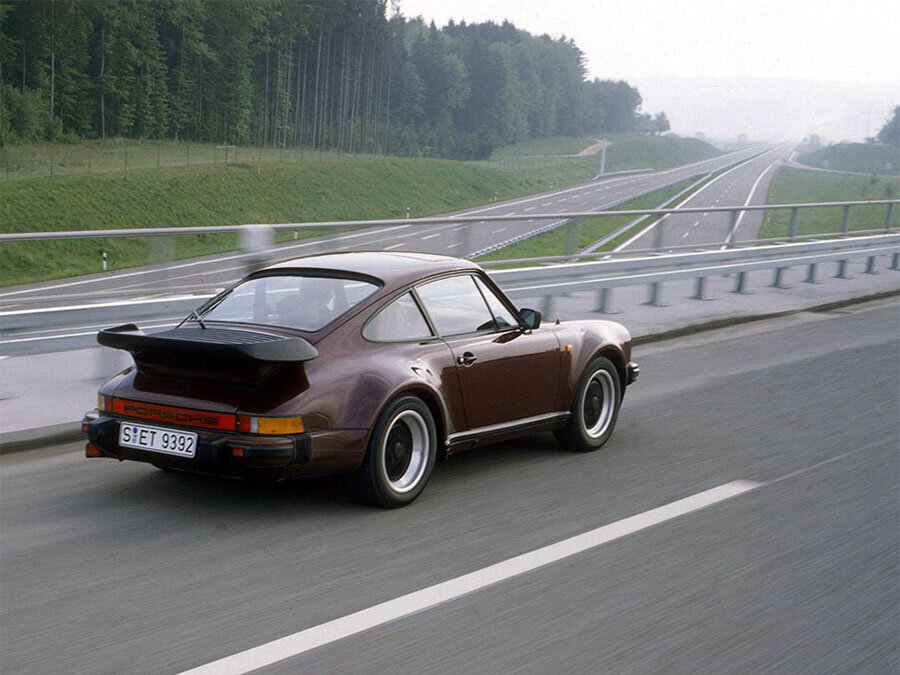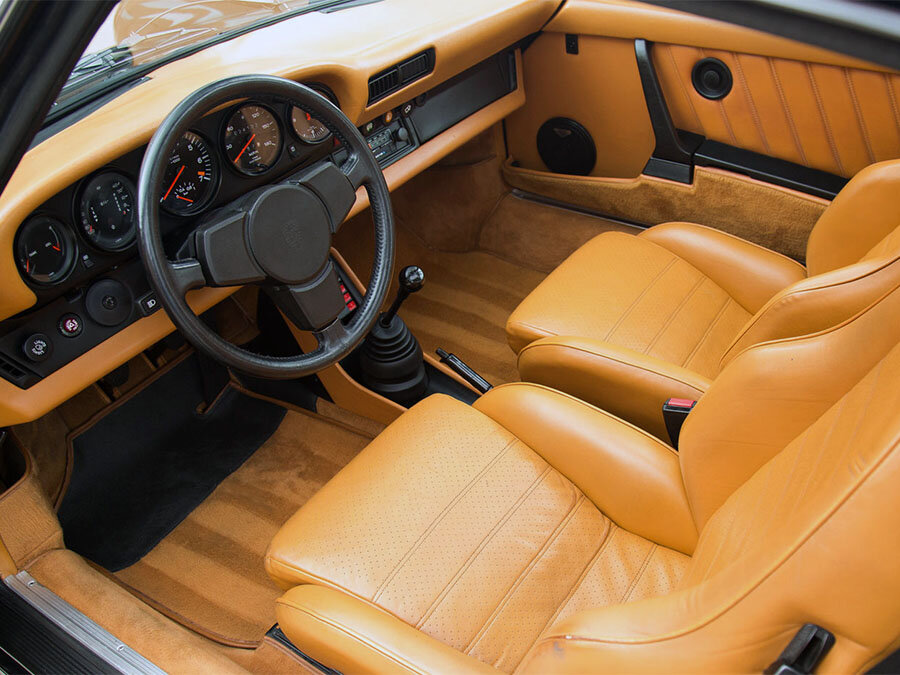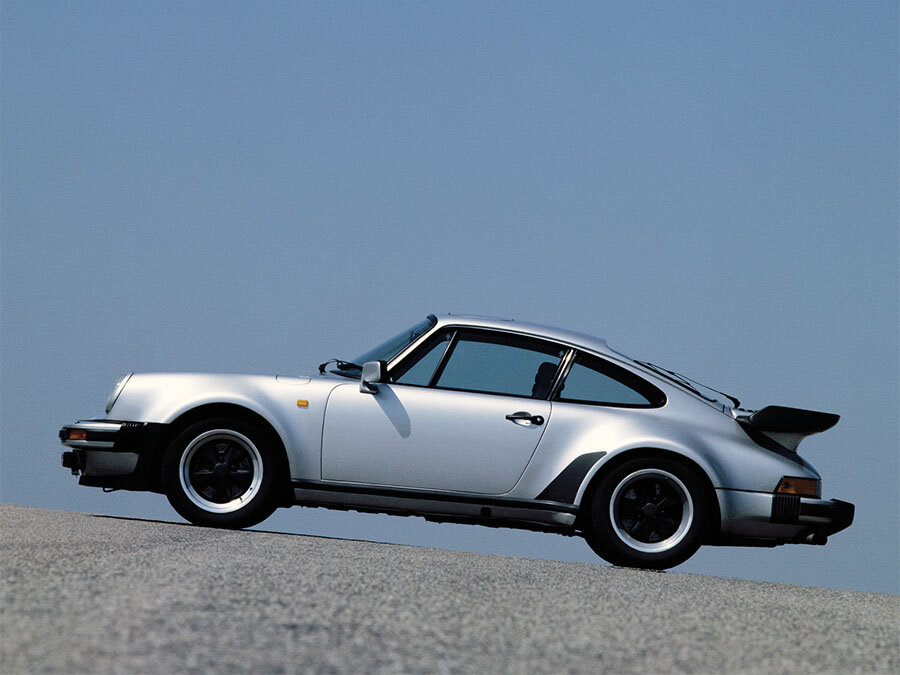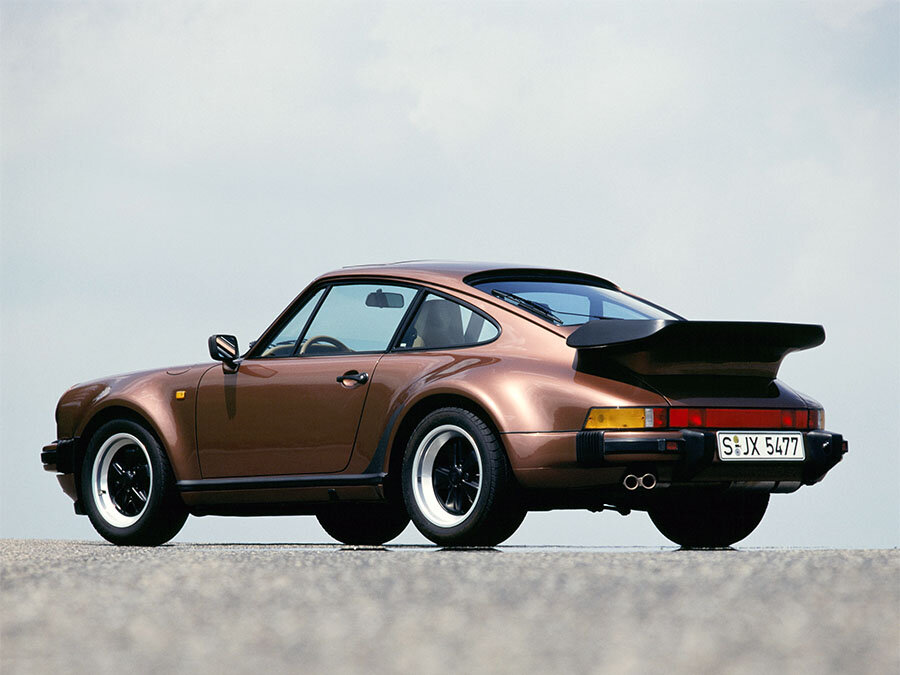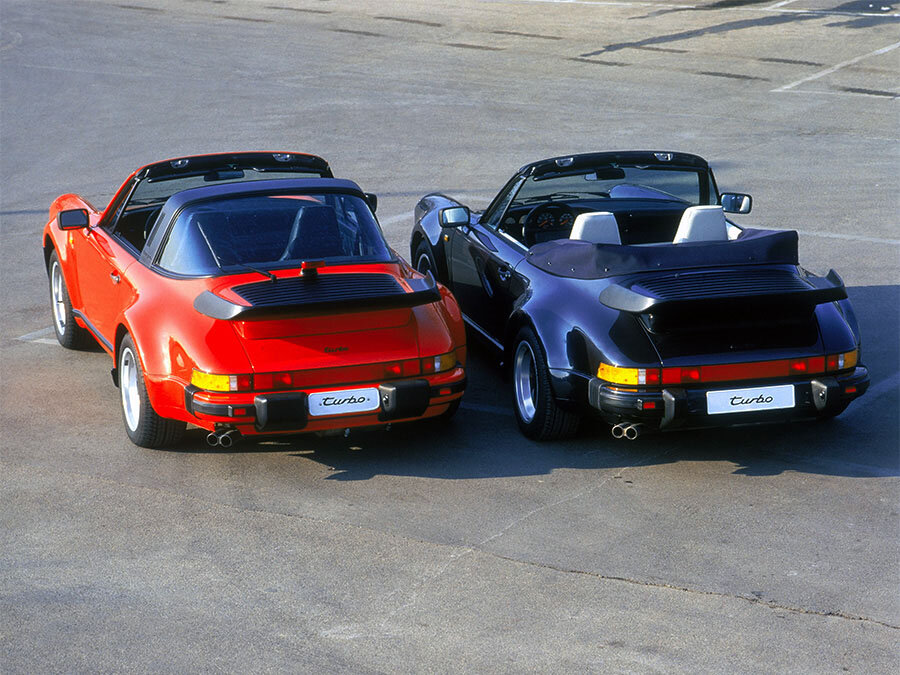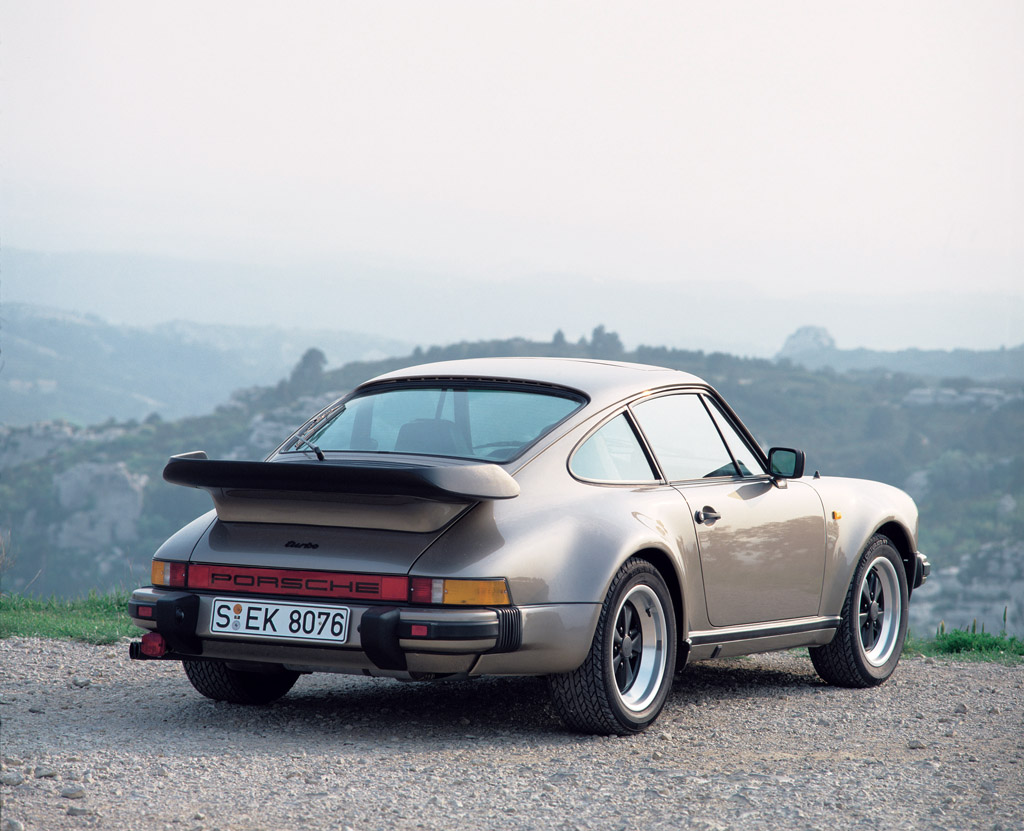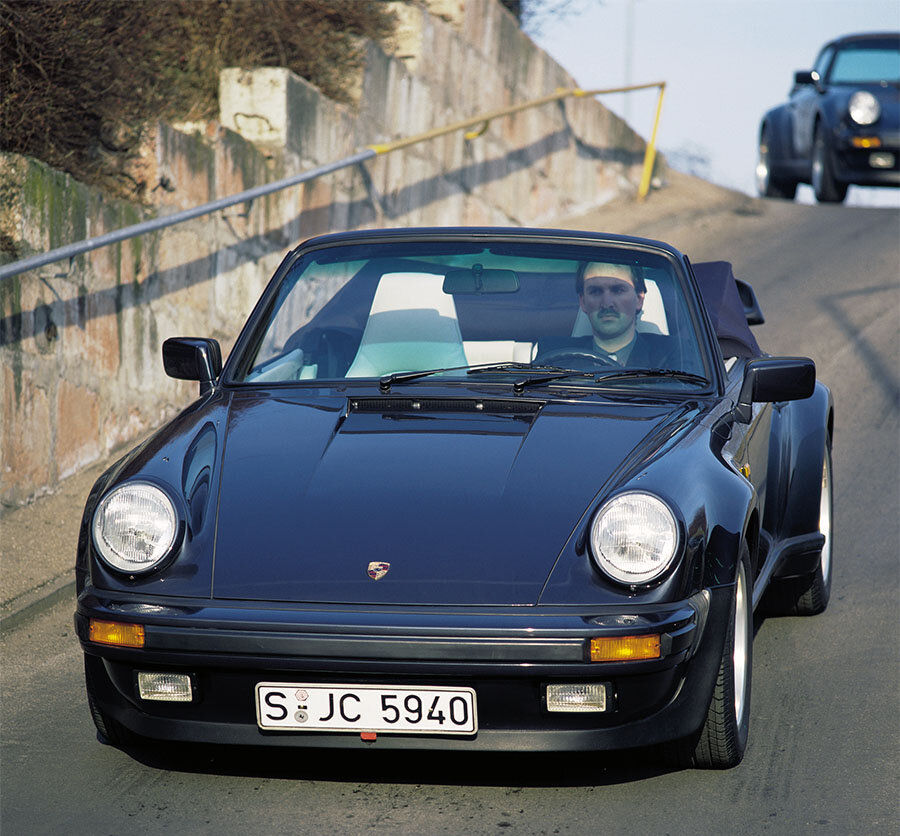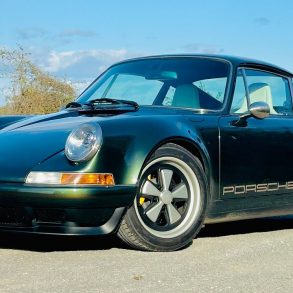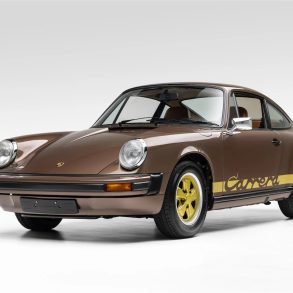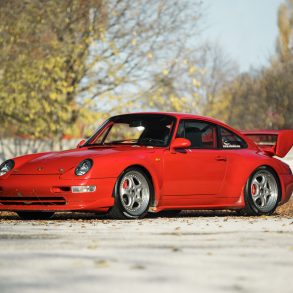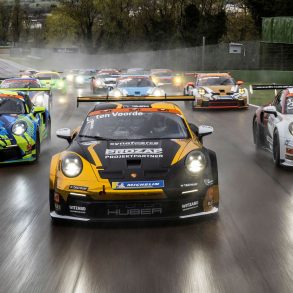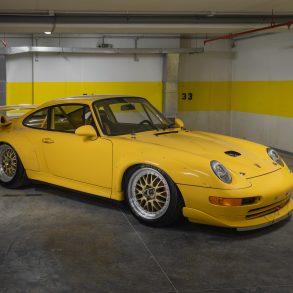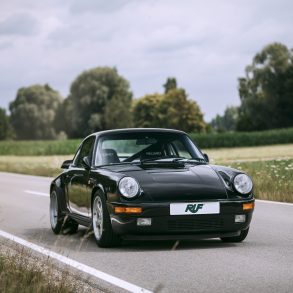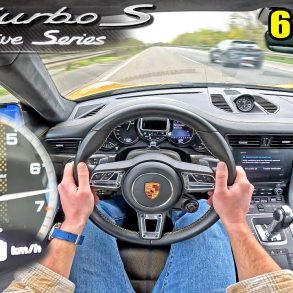(1978 – 1989) Porsche 911 Turbo 3.3 (930) – Ultimate Guide
The 930 was the most capable supercar of its time and catapulted Porsche’s brand worldwide, keeping up with the likes of Ferrari and Lamborghini while still being usable day to day (sound familiar?). But Porsche never stands still so the 911 Turbo 3.3 is an updated variant of that original 911 Turbo 3.0 and even faster than its predecessor.
Like the Turbo 3.0, the 911 Turbo 3.3 differs from regular 911 models by having bigger fenders for wider tires and a large ‘ducktail’ rear spoiler with small vent openings that draw in more air to the engine. The Turbo 3.3 has a flat-six powertrain mated to a four-speed manual transmission and is boosted by a turbocharger complemented by an intercooler. It offers 300 hp and 304 ft lbs of torque.
Performance was amazing for the era. The Turbo 3.3 can still keep up with modern sports cars when accelerating from a standstill, requiring 5.4 seconds for 0 to 60 mph and a quarter mile time of 14 seconds flat. Top speed was 160 mph. The Turbo 3.3 was a handful however.
Porsche discontinued the 930 after model year 1989 when its underlying “G-Series” platform was being replaced by the 964. ’89 models were the first and only versions of the 930 to feature a 5-speed transmission. A turbo version of the 964 officially succeeded the 930 in 1991 with a modified version of the same 3.3 litre engine.
The Background
Porsche never expected it to be such a commercial success. Demand far exceeded the expectations and Porsche ramped up production of the Turbo 3.0. To keep up with the likes of Ferrari and Lamborghini who had each launched new models, Porsche made its first and most significant upgrades to the 930 for 1978. A bigger engine with 3.3 liters in displacement and an air-to-air intercooler helped boost power to 300 hp. The Turbo also got a a revised ’whale tail’ rear spoiler that had been re-profiled and raised slightly to make room for the intercooler. The brakes were also upgraded (thank goodness).
In 1980 the Type 930 was pulled from the US (and Japanese) markets as a result of yet another change in emissions regulations. Believing that the 928 would eventually replace the 911 anyway, Fuhrmann cut-back spending on the model, and it was not until Fuhrmann’s resignation the company finally committed the financing to re-regulate the car.
It remained available on the Canadian and European markets and beginning in 1981 could be special-ordered as a “Flachbau” or “slantnose” edition. Each Flachbau unit was hand-crafted by remodeling the front fenders into 935-style slantnose and stuffed with an upgraded 3.3 L engine that produced 330hp. Very few were built as they commanded quite a premium over the cost of a basic 911 Turbo. For 1983 a 330 hp performance powerkit option became available on a build-to-order basis from Porsche. With the add-on came a 4-pipe exhaust system and an additional oil-cooler requiring a remodelled front spoiler and units bearing the add-on often featured additional ventilation holes in the rear fenders and modified rockers.
In 1986, the Type 930 was re-introduced to the US and Japanese markets, fitted with a 278 hp emission-controlled engine. Coinciding with the reunion of the Porsche Turbo with the American roads was the release of the Targa and Cabriolet versions which were welcomed with both open arms and wallets by Porsche enthusiasts.
The last major revision for the Type 930 came in 1989, which was ironically the last year of production for the model. It was finally equipped with a G50 transmission – the 5-speed manual that many feel should have been incorporated into the initial design back in 1975. Maybe that was just Porsche’s way of proving that they could squeeze superior performance out of just 4 gears – because they did.
The Details
The big update over the original 930 Turbo was the revised engined. The Type 930/60 saw displacement increase from 2994cc to 3299cc thanks to an increase in Bore from 95 mm to 97 mm which Stroke increased from 70.4mm to 74.4mm. The compression ratio also increased, from 6.5 to 7.0:1 and a larger but lighter turbo unit replaced the outgoing model’s unit.
The big deal in terms of evolution was the the addition of an air-to-air instead of water-to-air intercooler. Other upgrades included enlarged main bearings and new Bosch K-Jetronic fuel-injection and ignition system. Power went from 260 bhp in the old model to 300 bhp in the new model, while torque went from 253 ft lbs to 303 ft lbs. The four-speed gearbox was given new ratios and re-designated Type 930/34.
Performance improved in terms of the sheer numbers. Compared to the outgoing variant, the 3.3-litre Turbo was 7mph faster (161mph) and 0.6 of a second quicker from 0-62mph (5.1 seconds). Weight went from 1195kg to 1300kg and that extra weight largely from the new engine meant that the nature of Turbo changed. It wasn’t as fun and was probably even more dangerous. It may go a long way to explaining why many collectors see the early 930 Turbo 3.0 as the better drivers cars.
The chassis was basically the same, as was the suspension set up. The original Turbo brakes were upgraded to 304mm cross-drilled and ventilated discs with thicker discs (basically from the 917). Wheels were 16 x 7-inches at the front and 16 x 8 at the rear and were Fuchs units made in alloy.
Visually, the new rear spoiler changes to make room for the intercooler meant the wing was larger and flatter with noticeable cooling vents and a thicker surround. Options for the 3.3 included the ability to get a ZF limited-slip differential, rear fog lights, air-conditioning, an electric sunroof and a central console.
Model Timeline
1978 Model Year – I Series Cars
1,757 units were built on the 1978 model year I-series platform (starting in September 1977). 300bhp 3.3-litre model (930/60) with intercooler and 917 derived brakes. ‘Tea-tray’ rear spoiler (with upturned side fences) replaces ‘Whaletail’.
1979 Model Year – J Series Cars
2,552 units were built of the 1979 model year cars (starting in September 1978). The centre console was now standard while a new Chequered Pascha upholstery now an option. North American cars also got air-conditioning as standard.
1980 Model Year – A Series Cars
Instead of 1980 model year 911s adopting the expected K-series moniker, Porsche started from scratch to reflect a new 17 instead of 10-digit chassis numbering system. These latest A-series 930s came with dual instead of single exhausts and a brass tube oil cooler.
1981 Model Year – B Series Cars
Production dropped to 761 units for the 1981 model year. A new sports seat with bigger bolsters was optional while the First Special Wishes (Sonderwunschen) slant-nose special model was first delivered July 1981. Pop-up headlamps replace bumper mounted lights from following year and normal fit from 1985.
1982 Model Year – C Series Cars
The only significant change made for the 1982 model year C-series 930 was the addition of a new high powered alternator. Production was 1,027 units.
1983 Model Year – D Series Cars
The 1983 model year gave us a bit more torque (up to 318 ft lbs). The cars also got a new exhaust system and a the Bosch K-Jetronic had a warm-up feature. 1,080 units were built.
1984 Model Year – E Series Cars
For the 1984 model year upgrades included a brake wear indicator on the dash, a three-speed heater, new upholstery and new chain tensioners. 881 units were built.
1985 Model Year – F Series Cars
For the 1985 model year we got thicker anti-roll bars, an enlarged 85-litre fuel tank and bigger brake master cylinder. On the interior the seats were new and now electronically controlled (including heating). Central locking became standard and the radio antenna was integrated to the windscreen. A short shift gear lever was added along with a new four-spoke steering wheel. 1,148 units were produced.
1986 Model Year – G Series Cars
For the 1986 model year we got new Bosch LE-Jetronic fuel-injection, 9-inch wide rear wheels (up from 8-inches) and a slightly redesigned dash fascia. The 911 Turbo was re-introduced to the US market after a five year “rest”. 2,670 units were product (over 50% were for the U.S). Turbo SE (Special Equipment, slant-nose, option M506) limited edition available as special order, with a very nice 330 bhp.
1987 Model Year – H Series Cars
For the 1987 model year, Porsche began to offer the 930 in Targa and Cabriolet body styles as well as the original Coupe format. At the same time, an ‘Exclusive‘ options programme was officially introduced that enabled customers to specify all kinds of high end modifications. This most famously included option M505: the Turbo S Flachbau (covered separately). In addition to Flat Nose bodywork, the M505 package included side skirts, vented rear wheelarches, a deep front spoiler with supplementary oil cooler, a 330bhp engine, four-outlet exhaust and various interior upgrades. These features could also be specified with normal 911 headlights and cars equipped as such are sometimes referred to as Turbo S variants. Other updates introduced for the 1987 model year included a modified tail reflector strip that incorporated the fog and reverse lights which had previously been located underneath the back bumper. Inside, fully electric seats were made standard. The brakes were improved with bevelled vents to assist cooling. After record sales the previous year, 1987 was even better. 3094 Turbos were sold in various configurations.
1988 Model Year – I Series Cars
This figure dipped to 2784 during the 1988 model year when little was changed in the transition from H to I-series. A passenger door mirror and eight-speaker stereo were made standard but more significant changes were on the way. Slant-nose version (all body styles) available in normal production.
1989 Model Year – J Series Cars
For the 930’s final year in production (1989), Porsche switched from the four-speed Type 915 gearbox to the five-speed G50 unit. 2,524 units were built. Major upgrade to include G50 gearbox and hydraulic clutch operation. Flashing red diodes in lock buttons. Turbo LE special model with SE rear wings and normal production front end. In June 1989, Turbo discontinued.
Note: USA built cars. As usual, tighter safety and emissions legislation in the USA meant those cars sent across the Atlantic came with several modifications. All 930 motors were fitted with an air pump to reduce exhaust emissions regardless of destination. However, the ‘49 US-state’ Type 930/61 engine additionally came with thermal reactors while California-bound Turbos used Type 930/63 units further burdened by a vacuum control. Output of both versions was 265bhp at an unchanged 5500rpm. The torque rating was also slightly lower: 291lb-ft instead of 303lb-ft at an unchanged 4000rpm. Cosmetic changes to these US-spec. derivatives included amber running lights, red rear indicators and thicker body coloured headlight shrouds. Weight was unaffected but performance figures were slightly inferior.
The Type 930 was officially replaced by the Type 964 in 1990, however it will always have the honor of being the model that began Porsche’s Turbocharged legacy as each subsequent generation of the Model 911 from the Type 930 forward includes a turbocharged edition. The 1989 figure took total 911 Turbo sales between 1975 and 1989 to 18,770 units. Not bad for a car that Porsche thought would struggle to sell 400 unit.


